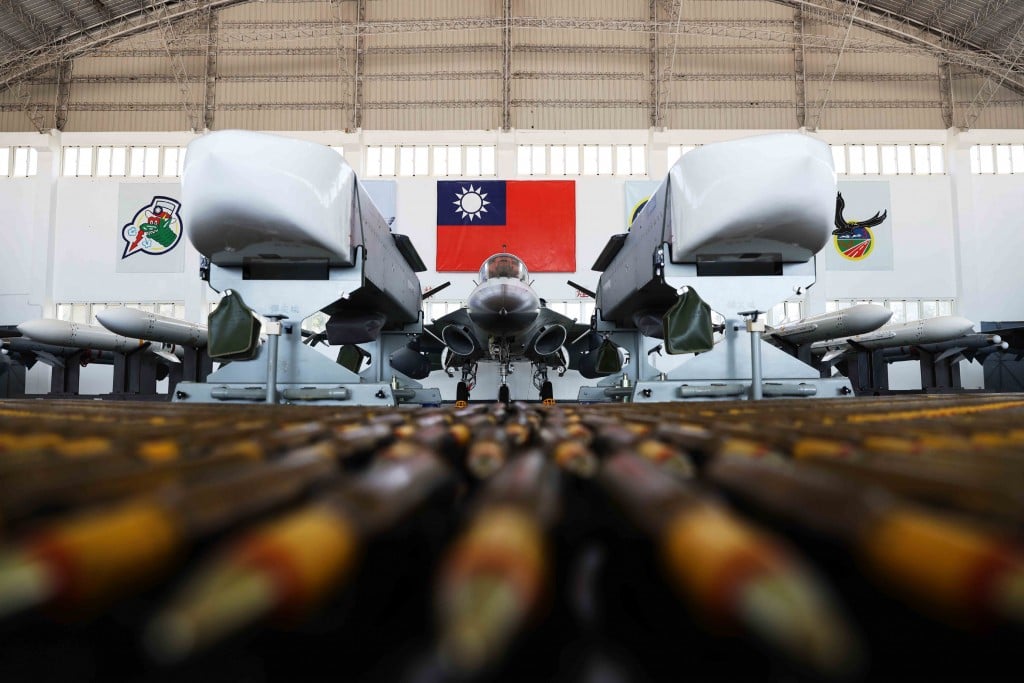
The United States must “provide strategic clarity” on what Washington would do if China invaded Taiwan, the vice chair of the House Armed Services Committee said Monday.
Rep. Elaine Luria (D-Va.) added, “We need to say [as an administration and Congress] we will come to the aid of Taiwan.” She said the time for Congress to act is now so that the president will have the authority to respond militarily to such an event, which current law does not provide.
“We need to have the debate in Congress now, not when [the Chinese are] halfway across the strait.” Luria added, “We should not take for granted their will” to bring Taiwan under Beijing’s control even if they lack amphibious assault capability.
The American public needs to realize what’s at stake in Taiwan and the Indo-Pacific, she said, adding, “Do you want the Chinese to take over [from the U.S.] as the world influencer?”
Although the government is still operating under the constraints of a continuing resolution almost halfway through this fiscal year, Luria didn’t expect to see plus-ups for the Navy when the administration submits its fiscal year 2023 request.
“I think more resources need to go to the Navy and Air Force [due to] the nature” of the Indo-Pacific, and the expected emphasis the theater will receive in the new defense strategy due out this month, she said. Past spending has been roughly divided into three equal parts for the services.
Constraints on this year’s spending due to the budget impasse, she noted, impact the future schedule and cost of the Columbia class ballistic missile submarine program, the Navy’s top spending priority. Also in limbo was the $22 billion plus-up called for in the National Defense Authorization Act.
As she has in the past, Luria took exception to a policy of disinvesting – particularly decommissioning ships which still have service life in order to invest in future systems – with each year’s budget submission.
“We can’t just build a new fleet in five years,” she said.

She expected “more of the same cuts in shipbuilding” coming forward in the new budget request.t. In the relatively near future 27 Arleigh Burke-class destroyers will be coming up on the end of their service life, and decisions need to be made about possible upgrades and continued service. “It was criminal what we did to the cruisers,” Luria said.
She added that the Navy is studying refueling USS Nimitz (CVN-68) a second time to extend its service life.
“We’re always shooting for the newest things,” like artificial intelligence and quantum computing breakthroughs that could change warfare. “Sounds great [but] the truth is you can’t get rid of the platform,” she said.
On budgeting, Luria wants the services to come to the House Armed Services Committee with presentations that say, “This is what we need; here’s the risk” if those needs aren’t met, as John Lehman did when he was Navy secretary. Otherwise, it’s a “shell game” of publicly supporting the administration’s request and then submitting a list of unfunded requirements, she said.
“Truth is, there was commitment from the top” from President Ronald Reagan for an approach like Lehman’s, which is needed today from President Joseph Biden.
While Navy officials answered questions about the budget, Luria said several times that the Navy has yet to present to Congress with an updated shipbuilding plan that could help decision-making on Capitol Hill.
That plan, along with details about the Navy’s long-time repair needs, also helps private shipyards, like Electric Boat and Newport News, in adjusting the size of their workforce and potentially expanding,and can encourage other companies to look for Navy work.
“We also need to be able to invest in our private yards,” Luria said, to spread out construction on new classes like frigates. She added that Electric Boat and Newport News, in addition to delivering Virginia-class submarines, developing Columbia class and nuclear-powered aircraft carriers, are now being asked to also take on major repair work.
“There’s only so much capacity on the waterfront” with public and private yards now, she said. Delays in return to service will only worsen as more ships join the fleet, she added, and other ships need necessary major maintenance to keep them in service if more yards aren’t available.





